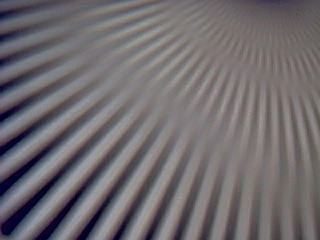
| Main Page |
|
Capacitance |
|
Polarization | Cursos |
 |
Neil C. Bruce | |||||
|
Design and construction of a
scatterometer for visible light scattering from 2D rough surfaces.
Measurements of the scattering of electromagnetic radiation from rough surfaces is an important method for characterising the rough surfaces both for practical applications and for basic scientific research. The equipment used to measure the reflected light can be divided in two categories:
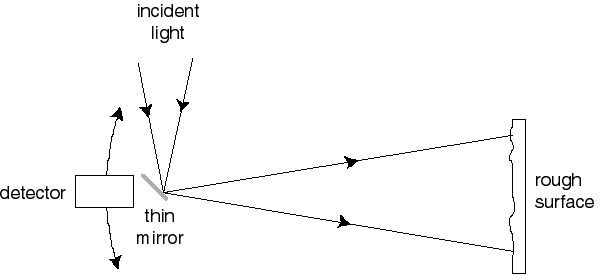
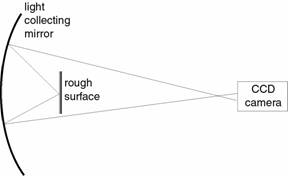
The first type of system has the problem of the time necessary to
perform a scan and that for 2 dimensionally rough surfaces and
non-normal incidence angles they cannot be used to measure all the
scattered light. The second type of scatterometer, which uses a mirror
to collect the scattered light, focuses all of the scattered rays to a
small area to reduce the size of the auxiliary optics. This type of
scatterometer can also be quicker than the scanning arm setup (using a
detector array) but has the problem that the optical system necessary to
collect the light becomes complicated for large angular fields of view,
for large illumination spots on the rough surface (necessary to average
the statistics of the surface roughness) or for shorter wavelengths.
Because of this last limitation this type of scatterometer has been limited to infra-red wavelengths where the aberrations of the optical system are, relative to the wavelength, smaller.
We have designed and built a scatterometer of the second type, using an elliptical mirror, which covers all of the visible region of the spectrum.
Below we show a schematic diagram of the system:
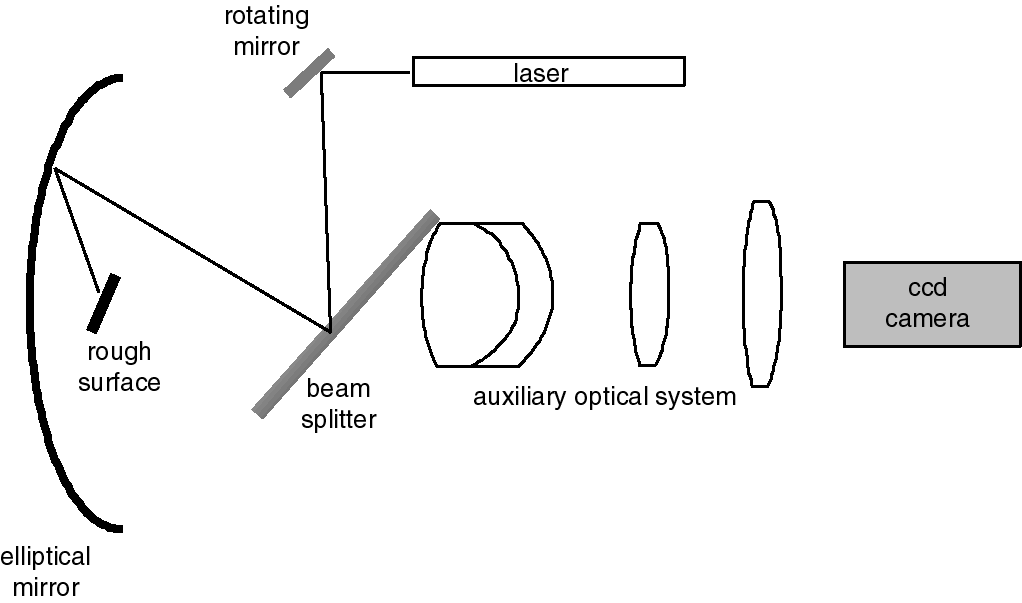
The auxiliary optical System was designed by us and built by The Centro de Investigaciones en Óptica (CIO) in León, Guanajuato, Mexico.
A photo of the system built is shown below:
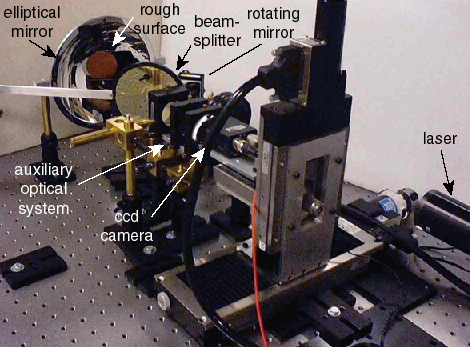
The first result we have obtained with this scatterometer is shown below. This image is made up of approximately 24 separate images and is for a surface constructed in CICESE, Mexico by Eugenio Mendez group. The surface is gold coated with Gaussian statistics and a standard deviation of the height of 0.646mm and a correlation length of 2.0mm.
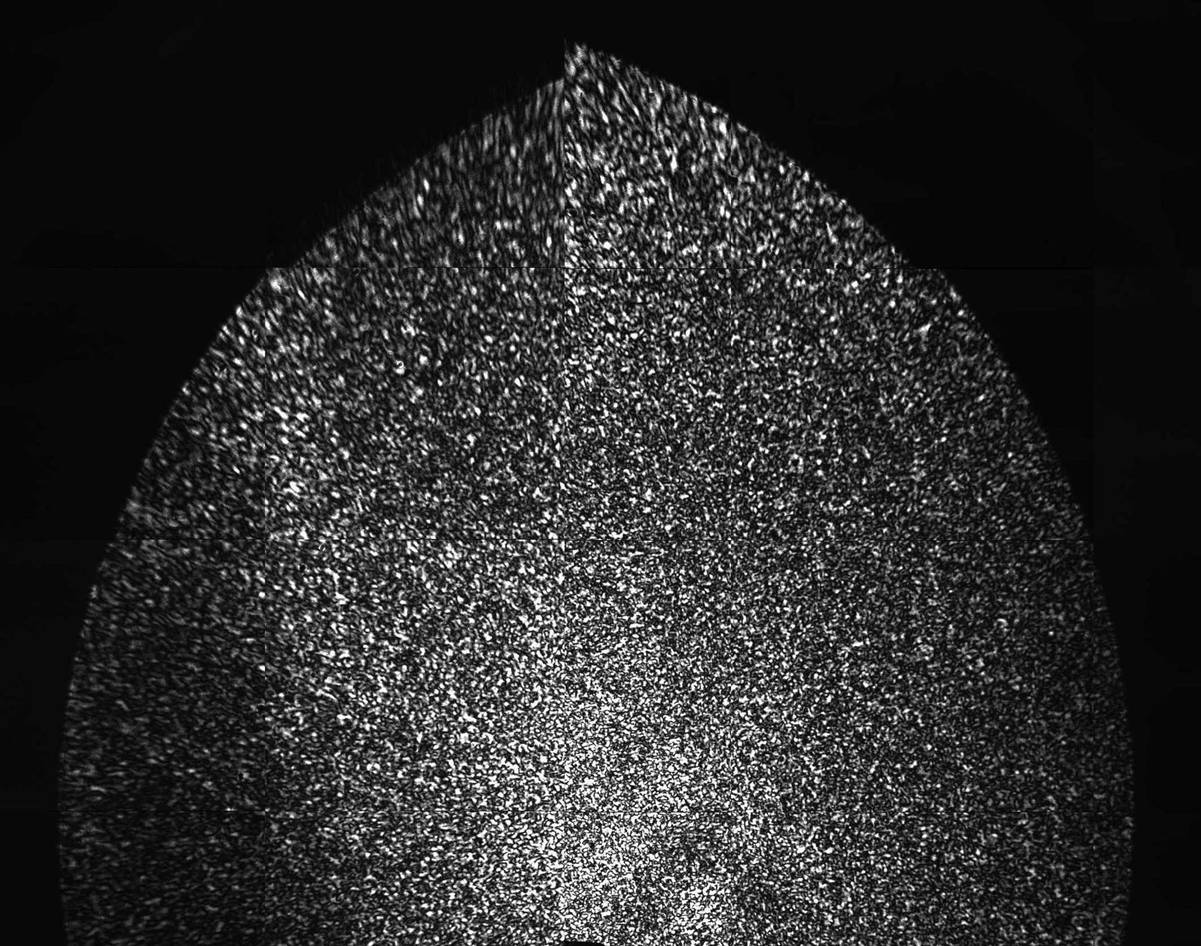
The structure which can be seen at the bottom of the
image, a little to the right of the centre is the enhanced backscatter
effect with the same polarization direction of the incident and
scattered light.
Publications:
| ICAT |